{"video":[{"pos":{"top":0,"left":0},"time":{"start":828,"end":3106.829932},"spot":null,"idx":0,"id":"vd-0","videoId":0}],"contents":[{"id":"wk-0","pos":{"top":5,"left":96},"time":{"start":138.4,"end":168.4},"art":"Vittorio Sella","lang":"en","wiki":"<div>\n<p><b>Vittorio Sella</b> (28 August 1859 – 12 August 1943) was an Italian photographer and mountaineer, who took photographs of mountains which are regarded as some of the finest ever made.</p>\n<p>Sella was born in Biella in the foothills of the Alps and acquired his interest in Alpinism from his uncle, Quintino Sella. He made a number of significant climbs in the Alps, including the first winter ascents of the Matterhorn and Monte Rosa, and the first winter traverse of Mont Blanc. He took part in several expeditions further afield, including three to the Caucasus (where a peak now bears his name), to Mount Saint Elias in Alaska, to the Rwenzori in Africa, and the 1909 expedition to K2 and the Karakoram. The latter three expeditions were in the company of Luigi Amedeo, Duke of the Abruzzi. Sella continued to climb into his old age, and made his last attempt on the Matterhorn at seventy six. The attempt failed when one of his guides was injured in an accident.</p>\n<p>The high quality of Sella's photography was in part due to his use of 30×40&nbsp;cm photographic plates, in spite of the difficulty of carrying bulky and fragile equipment into remote places. He had to invent equipment, including modified pack saddles and rucksacks, to allow these particularly large glass plates to be transported safely. His photographs were widely published and exhibited, and highly praised; Ansel Adams, who saw thirty-one that Sella had presented to the US Sierra Club, said they inspired \"a definitely religious awe\". Many of the photographs he took were of mountains which had not been previously recorded and so have historical as well as artistic significance; for example by recording the retreat of glaciers in the Rwenzori mountains in Central Africa.</p>\n<p>Sella died in Biella in 1943. His collection of photographs is now managed by the <b>Sella Foundation</b> (<i>Fondazione Sella</i>) in Biella. Some pictures of Sella are exhibited in the <i>Museo Nazionale della Montagna \"Duca degli Abruzzi\"</i> in Turin.</p>\n\n\n\n<!-- \nNewPP limit report\nParsed by mw1203\nCached time: 20151019075337\nCache expiry: 2592000\nDynamic content: false\nCPU time usage: 0.094 seconds\nReal time usage: 0.112 seconds\nPreprocessor visited node count: 326/1000000\nPreprocessor generated node count: 0/1500000\nPost‐expand include size: 10056/2097152 bytes\nTemplate argument size: 0/2097152 bytes\nHighest expansion depth: 3/40\nExpensive parser function count: 0/500\nLua time usage: 0.033/10.000 seconds\nLua memory usage: 1.97 MB/50 MB\nNumber of Wikibase entities loaded: 0-->\n\n<!-- \nTransclusion expansion time report (%,ms,calls,template)\n100.00% 67.878 1 - -total\n 73.07% 49.598 3 - Template:Cite_book\n 13.35% 9.065 2 - Template:Cite_news\n 12.49% 8.481 2 - Template:Cite_web\n-->\n</div><a href=\"http://en.wikipedia.org/wiki/Vittorio Sella\" target=\"_blank\">Continua a leggere..</a>","title":"Vittorio Sella"},{"id":"tx-1","pos":{"top":5,"left":96},"time":{"start":65,"end":95},"title":"Fabiano Ventura","text":"<p><a href=\"http://www.fabianoventura.it/en/\" target=\"_blank\">continua a leggere...</a></p>\n"},{"id":"gm-2","pos":{"top":5,"left":96},"time":{"start":226.9,"end":256.9},"zoom":8,"mapType":"roadmap","ind":"Caucaso Minore, Provincia di Shirak, Armenia","loc":{"lat":"41.00","lng":"44.00"}},{"id":"wk-3","pos":{"top":5,"left":96},"time":{"start":183.9,"end":213.9},"art":"Greater Caucasus ","lang":"en","wiki":"<div style=\"float:left;margin-right:10px\"><img src=\"http://upload.wikimedia.org/wikipedia/commons/thumb/f/fb/Arkhyz.jpg/280px-Arkhyz.jpg\"></div><br><div>\n<p><b>Greater Caucasus</b> (Russian: <span lang=\"ru\" xml:lang=\"ru\">Большой Кавказ</span>; Azerbaijani: <span lang=\"az\" xml:lang=\"az\"><i>Böyük Qafqaz</i></span>; Georgian: <span lang=\"ka\" xml:lang=\"ka\">დიდი კავკასიონი</span>, sometimes translated as \"Caucasus Major\", \"Big Caucasus\" or \"Large Caucasus\") is the major mountain range of the Caucasus Mountains.</p>\n<p>The range stretches for about 1,200 kilometres (750 mi) from west-northwest to east-southeast, between the Taman Peninsula of the Black Sea to the Absheron Peninsula of the Caspian Sea: from the Western Caucasus in the vicinity of Sochi on the northeastern shore of the Black Sea and reaching nearly to Baku on the Caspian.</p>\n<p>The range is traditionally separated into three parts:</p>\n\n<p>In the wetter Western Caucasus, the mountains are heavily forested (deciduous forest up to 1,500 m, coniferous forest up to 2,500 m and alpine meadows above the tree line). In the drier Eastern Caucasus, the mountains are mostly treeless.</p>\n\n\n<!-- \nNewPP limit report\nParsed by mw1231\nCached time: 20151019094558\nCache expiry: 2592000\nDynamic content: false\nCPU time usage: 0.190 seconds\nReal time usage: 0.255 seconds\nPreprocessor visited node count: 1450/1000000\nPreprocessor generated node count: 0/1500000\nPost‐expand include size: 25564/2097152 bytes\nTemplate argument size: 1185/2097152 bytes\nHighest expansion depth: 21/40\nExpensive parser function count: 7/500\nLua time usage: 0.078/10.000 seconds\nLua memory usage: 3.05 MB/50 MB\nNumber of Wikibase entities loaded: 1-->\n\n<!-- \nTransclusion expansion time report (%,ms,calls,template)\n100.00% 227.588 1 - -total\n 78.34% 178.285 1 - Template:Infobox_mountain_range\n 73.11% 166.390 1 - Template:Infobox\n 20.75% 47.232 1 - Template:Infobox_coord\n 18.33% 41.717 1 - Template:Coord\n 18.25% 41.530 3 - Template:Language_with_name\n 17.04% 38.791 3 - Template:Lang\n 16.08% 36.591 2 - Template:Convinfobox\n 15.75% 35.847 3 - Template:Category_handler\n 15.06% 34.269 1 - Template:Lang-ru\n-->\n</div><a href=\"http://en.wikipedia.org/wiki/Greater Caucasus\" target=\"_blank\">Continua a leggere..</a>","title":"Greater Caucasus"},{"id":"wk-4","pos":{"top":5,"left":96},"time":{"start":324.5,"end":354.5},"art":"Svaneti","lang":"en","wiki":"<div style=\"float:left;margin-right:10px\"><img src=\"http://upload.wikimedia.org/wikipedia/commons/thumb/1/16/SvanetiHistorical.svg/250px-SvanetiHistorical.svg.png\"></div><br><div>\n\n<p><b>Svaneti</b> or <b>Svanetia</b> (<b>Suania</b> in ancient sources) (Georgian: <span lang=\"ka\" xml:lang=\"ka\">სვანეთი <i>Svaneti</i></span>) is a historic province in Georgia, in the northwestern part of the country. It is inhabited by the Svans, an ethnic subgroup of the Georgians.</p>\n\n\n<!-- \nNewPP limit report\nParsed by mw1134\nCached time: 20151019095058\nCache expiry: 2592000\nDynamic content: false\nCPU time usage: 0.394 seconds\nReal time usage: 0.454 seconds\nPreprocessor visited node count: 2410/1000000\nPreprocessor generated node count: 0/1500000\nPost‐expand include size: 13863/2097152 bytes\nTemplate argument size: 2499/2097152 bytes\nHighest expansion depth: 25/40\nExpensive parser function count: 1/500\nLua time usage: 0.143/10.000 seconds\nLua memory usage: 1.51 MB/50 MB\nNumber of Wikibase entities loaded: 0-->\n\n<!-- \nTransclusion expansion time report (%,ms,calls,template)\n100.00% 417.360 1 - -total\n 82.26% 343.340 1 - Template:Infobox_settlement\n 61.50% 256.676 3 - Template:Infobox\n 10.55% 44.036 1 - Template:Infobox_settlement/areadisp\n 9.70% 40.475 2 - Template:Infobox_settlement/metric\n 9.49% 39.590 1 - Template:Lang-ka\n 8.86% 36.971 1 - Template:Language_with_name\n 8.17% 34.114 1 - Template:Infobox_World_Heritage_Site\n 8.17% 34.088 1 - Template:Lang\n 8.05% 33.606 3 - Template:Rnd\n-->\n</div><a href=\"http://en.wikipedia.org/wiki/Svaneti\" target=\"_blank\">Continua a leggere..</a>","title":"Svaneti"},{"id":"tx-5","pos":{"top":5,"left":96},"time":{"start":365,"end":395},"title":"Douglas William Freshfield","text":"<p>From Encyclopaedia Britannica</p>\n\n<p><strong>Douglas William Freshfield</strong><strong>,</strong> (born April 27, 1845, <a href=\"http://www.britannica.com/place/London\">London</a>—died Feb. 9, 1934, Forest Row, <a href=\"http://www.britannica.com/place/Sussex-historical-county-England\">Sussex</a>, Eng.), British mountaineer, explorer, geographer, and author who advocated the recognition of <a href=\"http://www.britannica.com/science/geography\">geography</a> as an independent discipline in English universities (from 1884).</p>\n\n<p><a href=\"http://www.britannica.com/biography/Douglas-William-Freshfield\" target=\"_blank\">See more...</a></p>\n"},{"id":"wk-6","pos":{"top":5,"left":96},"time":{"start":442,"end":472},"art":"Karakorum","lang":"en","wiki":"<div>\n\n\n\n\n\n\n\n\n<p><b>Karakorum</b> (Classical Mongolian: <span lang=\"und-Mong\" style=\"display:inline-block; font-weight:normal; font-family:'Menk Hawang Tig', 'Menk Qagan Tig', 'Menk Garqag Tig', 'Menk Har_a Tig', 'Menk Scnin Tig', 'Mongolian BT', 'Mongolian Baiti', 'Mongol Usug', 'MongolianScript', 'Code2000', 'Menksoft Qagan'; font-size: 1.5em; line-height: 1em; writing-mode: vertical-lr; -webkit-writing-mode: vertical-lr; -o-writing-mode: vertical-lr; -ms-writing-mode: tb-lr; writing-mode: tb-lr; vertical-align:top;\" xml:lang=\"und-Mong\">ᠬᠠᠷᠠᠬᠣᠷᠣᠮ</span> <i>Qara Qorum</i>, Khalkha Mongolian: Хархорум <i>Kharkhorum</i>) was the capital of the Mongol Empire between 1235 and 1260, and of the Northern Yuan in the 14–15th centuries. Its ruins lie in the northwestern corner of the Övörkhangai Province of Mongolia, near today's town of Kharkhorin, and adjacent to the Erdene Zuu monastery. They are part of the upper part of the World Heritage Site Orkhon Valley Cultural Landscape.</p>\n\n\n<!-- \nNewPP limit report\nParsed by mw1122\nCached time: 20151019100405\nCache expiry: 2592000\nDynamic content: false\nCPU time usage: 0.125 seconds\nReal time usage: 0.147 seconds\nPreprocessor visited node count: 112/1000000\nPreprocessor generated node count: 0/1500000\nPost‐expand include size: 2022/2097152 bytes\nTemplate argument size: 378/2097152 bytes\nHighest expansion depth: 8/40\nExpensive parser function count: 0/500\nLua time usage: 0.009/10.000 seconds\nLua memory usage: 524 KB/50 MB\nNumber of Wikibase entities loaded: 0-->\n\n<!-- \nTransclusion expansion time report (%,ms,calls,template)\n100.00% 55.917 1 - -total\n 68.79% 38.464 1 - Template:About\n 63.01% 35.235 2 - Template:Hatnote\n 17.40% 9.729 1 - Template:Distinguish\n 13.33% 7.451 1 - Template:MongolUnicode\n 6.34% 3.543 1 - Template:Trim\n 6.19% 3.460 1 - Template:Writing-mode\n 4.54% 2.540 1 - Template:Str_left\n-->\n</div><a href=\"http://en.wikipedia.org/wiki/Karakorum\" target=\"_blank\">Continua a leggere..</a>","title":"Karakorum"},{"id":"wk-7","pos":{"top":5,"left":96},"time":{"start":511.2,"end":541.2},"art":"Glacier","lang":"en","wiki":"<div>\n\n\n\n\n<p>A <b>glacier</b> (<span class=\"nowrap\"><small>US</small> <span class=\"IPA nopopups\">/<span style=\"border-bottom:1px dotted\"><span title=\"/ˈ/ primary stress follows\">ˈ</span><span title=\"'g' in 'guy'\">ɡ</span><span title=\"'l' in 'lie'\">l</span><span title=\"/eɪ/ long 'a' in 'base'\">eɪ</span><span title=\"/ʃ/ 'sh' in 'shy'\">ʃ</span><span title=\"/ər/ 'er' in 'finger'\">ər</span></span>/</span></span> or <span class=\"nowrap\"><small>UK</small> <span class=\"IPA nopopups\">/<span style=\"border-bottom:1px dotted\"><span title=\"/ˈ/ primary stress follows\">ˈ</span><span title=\"'g' in 'guy'\">ɡ</span><span title=\"'l' in 'lie'\">l</span><span title=\"/æ/ short 'a' in 'bad'\">æ</span><span title=\"'s' in 'sigh'\">s</span><span title=\"/i/ 'y' in 'happy'\">i</span><span title=\"/ə/ 'a' in 'about'\">ə</span></span>/</span></span>) is a persistent body of dense ice that is constantly moving under its own weight; it forms where the accumulation of snow exceeds its ablation (melting and sublimation) over many years, often centuries. Glaciers slowly deform and flow due to stresses induced by their weight, creating crevasses, seracs, and other distinguishing features. They also abrade rock and debris from their substrate to create landforms such as cirques and moraines. Glaciers form only on land and are distinct from the much thinner sea ice and lake ice that form on the surface of bodies of water.</p>\n<p>On Earth, 99% of glacial ice is contained within vast ice sheets in the polar regions, but glaciers may be found in mountain ranges on every continent except Australia, and on a few high-latitude oceanic islands. Between 35°N and 35°S, glaciers occur only in the Himalayas, Andes, Rocky Mountains, a few high mountains in East Africa, Mexico, New Guinea and on Zard Kuh in Iran. Glaciers cover about 10 percent of Earth's land surface. Continental glaciers cover nearly 5 million square miles of Antarctica's 5.1 million square miles, with an average thickness of 7,000 feet. Greenland and Patagonia also have huge expanses of continental glaciers.</p>\n<p>Glacial ice is the largest reservoir of freshwater on Earth. Many glaciers from temperate, alpine and seasonal polar climates store water as ice during the colder seasons and release it later in the form of meltwater as warmer summer temperatures cause the glacier to melt, creating a water source that is especially important for plants, animals and human uses when other sources may be scant. Within high altitude and Antarctic environments, the seasonal temperature difference is often not sufficient to release meltwater.</p>\n<p>Because glacial mass is affected by long-term climate changes, e.g., precipitation, mean temperature, and cloud cover, glacial mass changes are considered among the most sensitive indicators of climate change and are a major source of variations in sea level.</p>\n<p>A large piece of compressed ice, or a glacier, would appear blue as large quantities of water appear blue. The latter is because the water molecule absorbs other colors more efficiently than blue. The other reason for the blue color of glaciers is the lack of air bubbles. The air bubbles, which give a white color to the regular ice, are squeezed out by pressure increasing the density of the created ice.</p>\n\n\n\n<!-- \nNewPP limit report\nParsed by mw1140\nCached time: 20151019100834\nCache expiry: 2592000\nDynamic content: false\nCPU time usage: 0.230 seconds\nReal time usage: 0.282 seconds\nPreprocessor visited node count: 286/1000000\nPreprocessor generated node count: 0/1500000\nPost‐expand include size: 7179/2097152 bytes\nTemplate argument size: 396/2097152 bytes\nHighest expansion depth: 12/40\nExpensive parser function count: 1/500\nLua time usage: 0.092/10.000 seconds\nLua memory usage: 3.23 MB/50 MB\nNumber of Wikibase entities loaded: 0-->\n\n<!-- \nTransclusion expansion time report (%,ms,calls,template)\n100.00% 253.768 1 - -total\n 22.26% 56.488 1 - Template:Convert\n 18.68% 47.391 1 - Template:About\n 16.53% 41.939 1 - Template:Cite_book\n 15.35% 38.963 1 - Template:Hatnote\n 8.93% 22.673 1 - Template:Use_American_English\n 8.80% 22.341 2 - Template:IPAc-en\n 6.26% 15.897 1 - Template:DMCA\n 5.21% 13.226 1 - Template:Dated_maintenance_category\n 3.83% 9.728 1 - Template:Cite_web\n-->\n</div><a href=\"http://en.wikipedia.org/wiki/Glacier\" target=\"_blank\">Continua a leggere..</a>","title":"Glacier"},{"id":"wk-8","pos":{"top":5,"left":96},"time":{"start":833.1,"end":863.1},"art":"Mikhail Kalatozov","lang":"en","wiki":"<div>\n\n\n<p><b>Mikhail Konstantinovich Kalatozov</b> (Georgian: <span lang=\"ka\" xml:lang=\"ka\">მიხეილ კალატოზიშვილი</span>, Russian: <span lang=\"ru\" xml:lang=\"ru\">Михаи́л Константи́нович Калато́зов</span>) (28 December 1903 – 27 March 1973), born Mikheil Kalatozishvili, was a Georgian/Russian film director. Born in Tiflis (now Tbilisi), he studied economics before starting his film career as an actor and later cinematographer.</p>\n<p>He directed several documentary films, including <i>Salt for Svanetia</i> (1930), but was forced to withdraw from his profession after his film <i>Nail in the Boot</i> (1931) was banned by Stalinist censors. During World War II he directed several propaganda films and worked as a cultural attaché at the Soviet embassy in the United States.</p>\n<p>During the 1950s he directed several other films. His four final features, <i>The Cranes Are Flying</i> (1957), <i>The Unsent Letter</i> (1959), <i>I Am Cuba</i> (1964), and <i>The Red Tent</i> (1971), are among his most famous works.</p>\n<p>He died in Moscow.</p>\n\n\n\n<!-- \nNewPP limit report\nParsed by mw1224\nCached time: 20151019101631\nCache expiry: 86400\nDynamic content: true\nCPU time usage: 0.135 seconds\nReal time usage: 0.194 seconds\nPreprocessor visited node count: 1180/1000000\nPreprocessor generated node count: 0/1500000\nPost‐expand include size: 12195/2097152 bytes\nTemplate argument size: 2042/2097152 bytes\nHighest expansion depth: 16/40\nExpensive parser function count: 3/500\nLua time usage: 0.051/10.000 seconds\nLua memory usage: 2 MB/50 MB\nNumber of Wikibase entities loaded: 1-->\n\n<!-- \nTransclusion expansion time report (%,ms,calls,template)\n100.00% 186.430 1 - -total\n 38.40% 71.591 1 - Template:Infobox_person\n 28.23% 52.635 1 - Template:Infobox\n 18.43% 34.360 1 - Template:Refimprove\n 15.74% 29.340 1 - Template:Ambox\n 13.74% 25.614 1 - Template:Cite_book\n 13.58% 25.321 5 - Template:Br_separated_entries\n 13.19% 24.597 1 - Template:About\n 9.86% 18.380 1 - Template:Hatnote\n 8.67% 16.167 2 - Template:Language_with_name\n-->\n</div><a href=\"http://en.wikipedia.org/wiki/Mikhail Kalatozov\" target=\"_blank\">Continua a leggere..</a>","title":"Mikhail Kalatozov"},{"id":"wk-9","pos":{"top":5,"left":96},"time":{"start":873.6,"end":903.6},"art":"Salt for Svanetia","lang":"en","wiki":"<div style=\"float:left;margin-right:10px\"><img src=\"http:null\"></div><br><div>\n<p><i><b>Salt for Svanetia</b></i> (Georgian: <span lang=\"ka\" xml:lang=\"ka\">მარილი სვანეთს</span>, Russian: <span lang=\"ru\" xml:lang=\"ru\">Соль Сванетии</span>) is a 1930 Georgian silent documentary film directed by Mikhail Kalatozov. As one of the earliest ethnographic films, it documents the life of the Svan people in the isolated mountain village of Ushguli in Svanetia, in the northwestern part of the Georgian Soviet Republic. Containing some propaganda, the climax of the film shows how a Soviet built road connects the previously isolated mountain village to Soviet civilisation. Many of the scenes of the film were staged, and the authenticity of some scenes has been disputed by the Svan people.</p>\n\n\n\n<!-- \nNewPP limit report\nParsed by mw1116\nCached time: 20151019102011\nCache expiry: 2592000\nDynamic content: false\nCPU time usage: 0.239 seconds\nReal time usage: 0.329 seconds\nPreprocessor visited node count: 494/1000000\nPreprocessor generated node count: 0/1500000\nPost‐expand include size: 10193/2097152 bytes\nTemplate argument size: 731/2097152 bytes\nHighest expansion depth: 11/40\nExpensive parser function count: 2/500\nLua time usage: 0.106/10.000 seconds\nLua memory usage: 1.78 MB/50 MB\nNumber of Wikibase entities loaded: 0-->\n\n<!-- \nTransclusion expansion time report (%,ms,calls,template)\n100.00% 305.732 1 - -total\n 46.33% 141.659 1 - Template:Infobox_film\n 42.64% 130.355 1 - Template:Infobox\n 23.13% 70.708 2 - Template:Cite_book\n 18.36% 56.147 2 - Template:Language_with_name\n 16.84% 51.496 1 - Template:Lang-ka\n 16.80% 51.372 2 - Template:Lang\n 15.08% 46.093 2 - Template:Category_handler\n 3.82% 11.674 1 - Template:Lang-ru\n 3.24% 9.918 4 - Template:ISO_639_name\n-->\n</div><a href=\"http://en.wikipedia.org/wiki/Salt for Svanetia\" target=\"_blank\">Continua a leggere..</a>","title":"Salt for Svanetia"},{"id":"wk-10","pos":{"top":5,"left":96},"time":{"start":1033.7,"end":1063.7},"art":"Golden Fleece","lang":"en","wiki":"<div>\n\n<p>In Greek mythology, the <b>Golden Fleece</b> (Greek: <span lang=\"el\" xml:lang=\"el\">χρυσόμαλλον δέρας</span> <i>chrysómallon déras</i>) is the fleece of the gold-hair winged ram, which was held in Colchis. The fleece is a symbol of authority and kingship. It figures in the tale of the hero Jason and his band of Argonauts, who set out on a quest for the fleece by order of King Pelias, in order to place Jason rightfully on the throne of Iolcus in Thessaly. Through the help of Medea, they acquire the Golden Fleece. The story is of great antiquity and was current in the time of Homer (eighth century BC). It survives in various forms, among which the details vary.</p>\n\n\n\n<!-- \nNewPP limit report\nParsed by mw1201\nCached time: 20151019102332\nCache expiry: 2592000\nDynamic content: false\nCPU time usage: 0.095 seconds\nReal time usage: 0.130 seconds\nPreprocessor visited node count: 159/1000000\nPreprocessor generated node count: 0/1500000\nPost‐expand include size: 2059/2097152 bytes\nTemplate argument size: 187/2097152 bytes\nHighest expansion depth: 11/40\nExpensive parser function count: 1/500\nLua time usage: 0.030/10.000 seconds\nLua memory usage: 1.28 MB/50 MB\nNumber of Wikibase entities loaded: 0-->\n\n<!-- \nTransclusion expansion time report (%,ms,calls,template)\n100.00% 122.891 1 - -total\n 34.64% 42.564 1 - Template:Lang-el\n 30.02% 36.894 1 - Template:Language_with_name\n 27.62% 33.948 1 - Template:Lang\n 26.08% 32.051 1 - Template:Other_uses\n 25.09% 30.831 1 - Template:Category_handler\n 23.59% 28.993 1 - Template:Cite_web\n 23.15% 28.455 1 - Template:About\n 19.72% 24.234 1 - Template:Hatnote\n 3.99% 4.899 2 - Template:ISO_639_name\n-->\n</div><a href=\"http://en.wikipedia.org/wiki/Golden Fleece\" target=\"_blank\">Continua a leggere..</a>","title":"Golden Fleece"},{"id":"wk-11","pos":{"top":5,"left":96},"time":{"start":1404.8,"end":1434.8},"art":"Georgia (country)","lang":"en","wiki":"<div style=\"float:left;margin-right:10px\"><img src=\"http://upload.wikimedia.org/wikipedia/commons/thumb/0/0f/Flag_of_Georgia.svg/125px-Flag_of_Georgia.svg.png\"></div><br><div>\n\n<p><b>Georgia</b> (<span class=\"nowrap\"><span class=\"noexcerpt\"><img alt=\"Listen\" src=\"//upload.wikimedia.org/wikipedia/commons/thumb/3/3b/Speakerlink-new.svg/11px-Speakerlink-new.svg.png\" width=\"11\" height=\"11\" srcset=\"//upload.wikimedia.org/wikipedia/commons/thumb/3/3b/Speakerlink-new.svg/17px-Speakerlink-new.svg.png 1.5x, //upload.wikimedia.org/wikipedia/commons/thumb/3/3b/Speakerlink-new.svg/22px-Speakerlink-new.svg.png 2x\" data-file-width=\"11\" data-file-height=\"11\"></span><span class=\"IPA nopopups\">/<span style=\"border-bottom:1px dotted\"><span title=\"/ˈ/ primary stress follows\">ˈ</span><span title=\"/dʒ/ 'j' in 'jam'\">dʒ</span><span title=\"/ɔr/ 'or' in 'born'\">ɔr</span><span title=\"/dʒ/ 'j' in 'jam'\">dʒ</span><span title=\"/ə/ 'a' in 'about'\">ə</span></span>/</span></span>; Georgian: <span lang=\"ka\">საქართველო</span>, tr. <i>Sakartvelo</i>, <small>IPA: </small><span title=\"Representation in the International Phonetic Alphabet (IPA)\" class=\"IPA\">[sɑkʰɑrtʰvɛlɔ]</span><small class=\"nowrap metadata\"> (<img alt=\"\" src=\"//upload.wikimedia.org/wikipedia/commons/thumb/2/21/Speaker_Icon.svg/13px-Speaker_Icon.svg.png\" width=\"13\" height=\"13\" srcset=\"//upload.wikimedia.org/wikipedia/commons/thumb/2/21/Speaker_Icon.svg/20px-Speaker_Icon.svg.png 1.5x, //upload.wikimedia.org/wikipedia/commons/thumb/2/21/Speaker_Icon.svg/26px-Speaker_Icon.svg.png 2x\" data-file-width=\"500\" data-file-height=\"500\"> listen)</small>) is a country in the Caucasus region of Eurasia. Located at the crossroads of Western Asia and Eastern Europe, it is bounded to the west by the Black Sea, to the north by Russia, to the south by Turkey and Armenia, and to the southeast by Azerbaijan. The capital and largest city is Tbilisi. Georgia covers a territory of 69,700 square kilometres (26,911 sq mi), and its 2015 population is about 3.75 million. Georgia is a unitary, semi-presidential republic, with the government elected through a representative democracy.</p>\n<p>During the classical era, several independent kingdoms became established in what is now Georgia. The kingdoms of Colchis and Iberia adopted Christianity in the early 4th century, making previously dominant paganism, Zoroastrianism, and Mithraism gradually decline. A unified Kingdom of Georgia reached the peak of its political and economic strength during the reign of King David IV and Queen Tamar in the 11th–12th centuries. Thereafter the area was dominated by various large empires for centuries, including the Safavids, Afsharids, and Qajar Iranians. In the late 18th century, the kingdom of Kartli-Kakheti forged an alliance with the Russian Empire, and the area was annexed by Russia in 1801. The latter's rule over Georgia was confirmed in 1813 by the Treaty of Gulistan. After a brief period of independence following the Russian Revolution of 1917, Georgia was occupied by Soviet Russia in 1921, becoming part of the Soviet Union as the Georgian Soviet Socialist Republic. After independence in 1991, post-communist Georgia suffered from civil unrest and economic crisis for most of the 1990s. This lasted until the Rose Revolution of 2003, after which the new government introduced democratic and economic reforms.</p>\n<p>Georgia is a member of the Council of Europe and the GUAM Organization for Democracy and Economic Development. It contains two <i>de facto</i> independent regions, Abkhazia and South Ossetia, which gained limited international recognition after the 2008 Russo-Georgian War. Georgia and a major part of the international community consider the regions to be part of Georgia's sovereign territory under Russian military occupation.</p>\n\n\n\n<!-- \nNewPP limit report\nParsed by mw1131\nCached time: 20151019102717\nCache expiry: 2592000\nDynamic content: false\nCPU time usage: 0.505 seconds\nReal time usage: 0.647 seconds\nPreprocessor visited node count: 1814/1000000\nPreprocessor generated node count: 0/1500000\nPost‐expand include size: 49428/2097152 bytes\nTemplate argument size: 8699/2097152 bytes\nHighest expansion depth: 12/40\nExpensive parser function count: 11/500\nLua time usage: 0.163/10.000 seconds\nLua memory usage: 4.83 MB/50 MB\nNumber of Wikibase entities loaded: 0-->\n\n<!-- \nTransclusion expansion time report (%,ms,calls,template)\n100.00% 602.400 1 - -total\n 21.57% 129.925 1 - Template:Infobox_country\n 10.05% 60.526 1 - Template:Pp-semi-sock\n 8.26% 49.785 1 - Template:Convert\n 7.89% 47.526 1 - Template:Lang-ka\n 7.40% 44.602 1 - Template:Language_with_name\n 6.95% 41.892 2 - Template:Broken_ref\n 6.89% 41.479 1 - Template:Lang\n 6.68% 40.230 1 - Template:Citation\n 6.29% 37.872 1 - Template:Category_handler\n-->\n</div><a href=\"http://en.wikipedia.org/wiki/Georgia (country)\" target=\"_blank\">Continua a leggere..</a>","title":"Georgia (country)"},{"id":"wk-12","pos":{"top":5,"left":96},"time":{"start":1957.7,"end":1987.7},"art":"Glaciology","lang":"en","wiki":"<div>\n\n<p><b>Glaciology</b> (from the Franco-Provençal language: <i>glace</i>, \"ice\"; or Latin: <i>glacies</i>, \"frost, ice\"; and Greek: λόγος, <i>logos</i>, \"speech\" lit. \"study of ice\") is the scientific study of glaciers, or more generally ice and natural phenomena that involve ice.</p>\n<p>Glaciology is an interdisciplinary earth science that integrates geophysics, geology, physical geography, geomorphology, climatology, meteorology, hydrology, biology, and ecology. The impact of glaciers on people includes the fields of human geography and anthropology. The discoveries of water ice on the Moon, Mars, Europa and Pluto add an extraterrestrial component to the field, as in \"astroglaciology\".</p>\n\n\n\n<!-- \nNewPP limit report\nParsed by mw1222\nCached time: 20151019102919\nCache expiry: 2592000\nDynamic content: false\nCPU time usage: 0.075 seconds\nReal time usage: 0.101 seconds\nPreprocessor visited node count: 102/1000000\nPreprocessor generated node count: 0/1500000\nPost‐expand include size: 5203/2097152 bytes\nTemplate argument size: 13/2097152 bytes\nHighest expansion depth: 6/40\nExpensive parser function count: 1/500\nLua time usage: 0.029/10.000 seconds\nLua memory usage: 1.49 MB/50 MB\nNumber of Wikibase entities loaded: 0-->\n\n<!-- \nTransclusion expansion time report (%,ms,calls,template)\n100.00% 93.846 1 - -total\n 55.77% 52.337 1 - Template:More_footnotes\n 35.27% 33.101 1 - Template:Ambox\n 24.20% 22.708 1 - Template:Cite_web\n-->\n</div><a href=\"http://en.wikipedia.org/wiki/Glaciology\" target=\"_blank\">Continua a leggere..</a>","title":"Glaciology"}]}
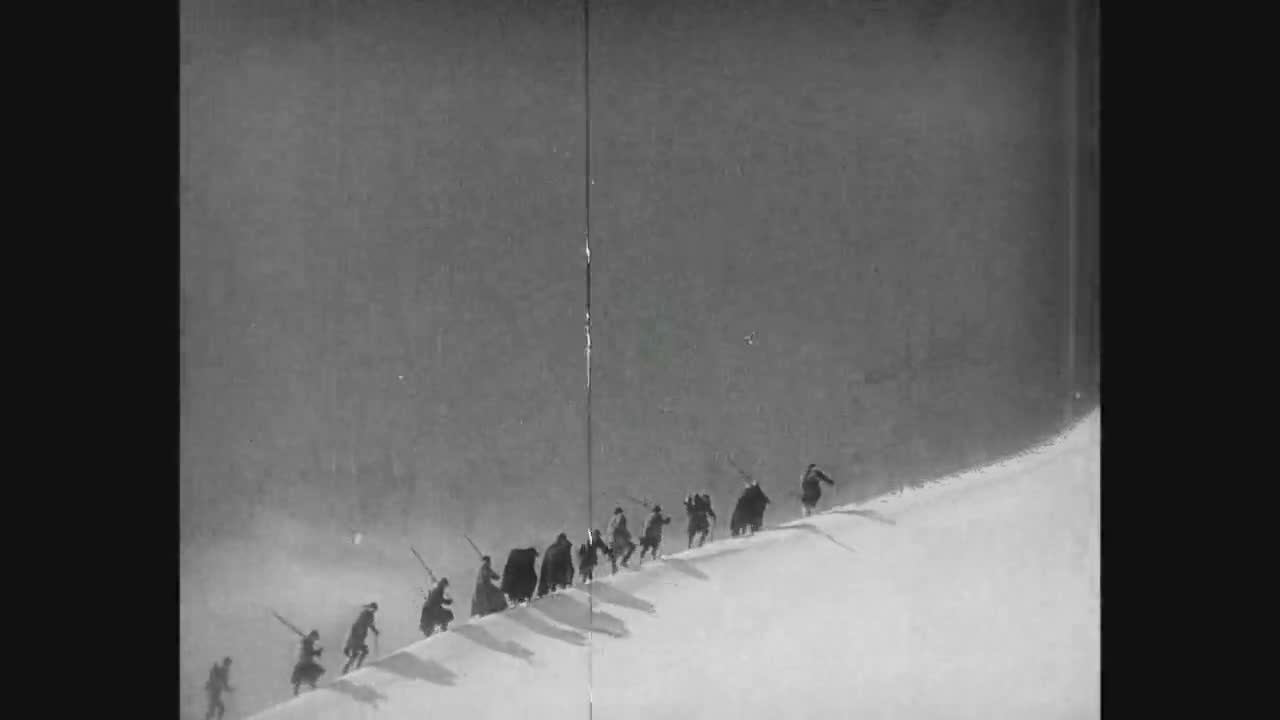


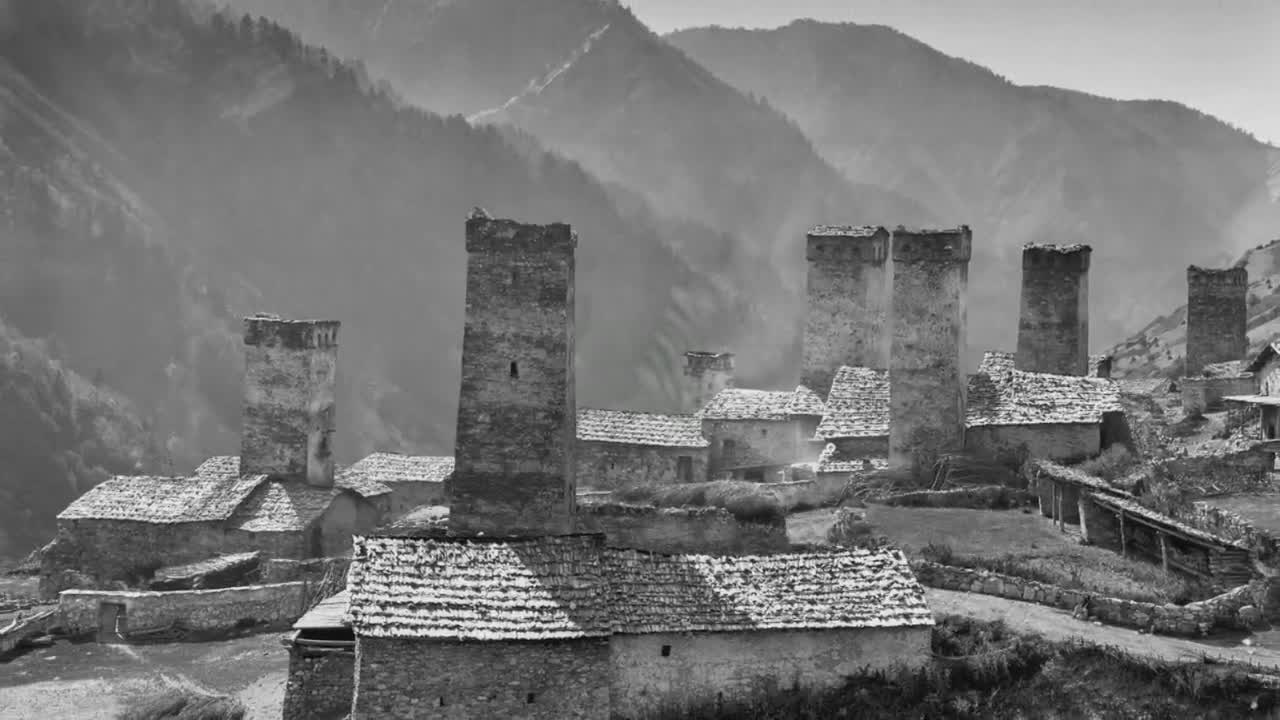

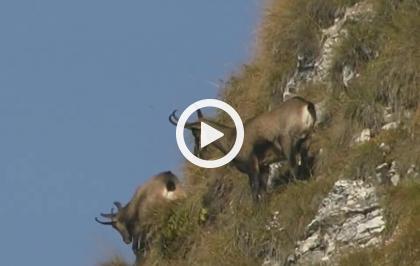
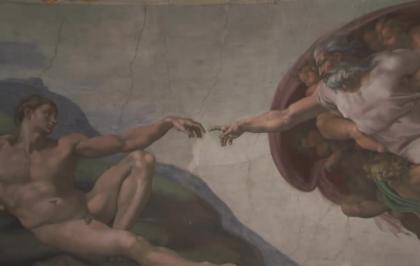
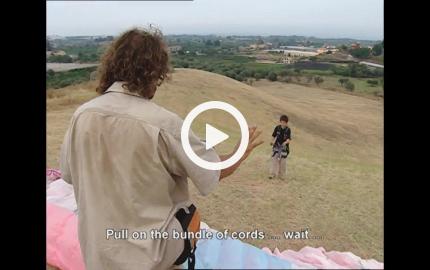
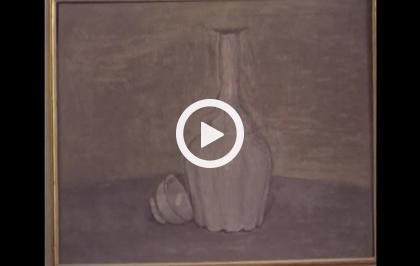
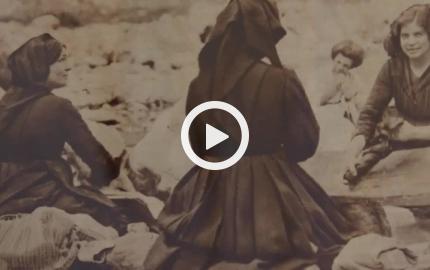
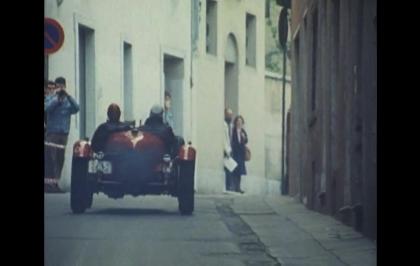
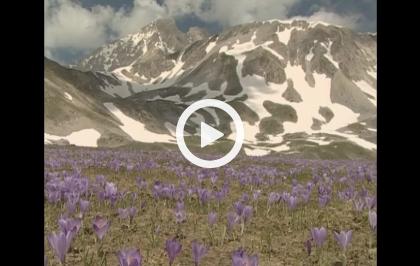



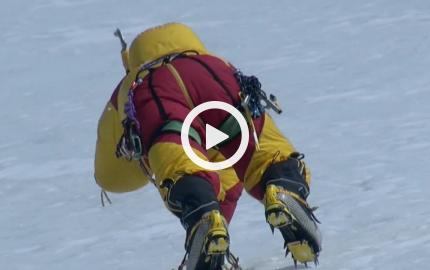
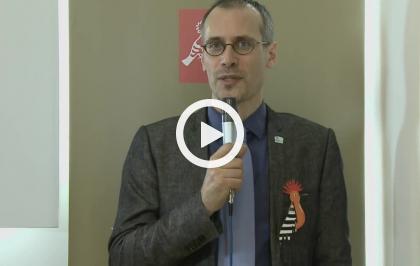
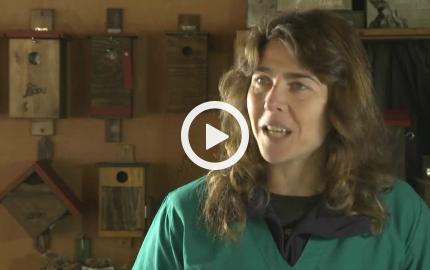
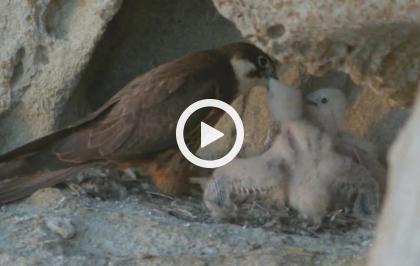
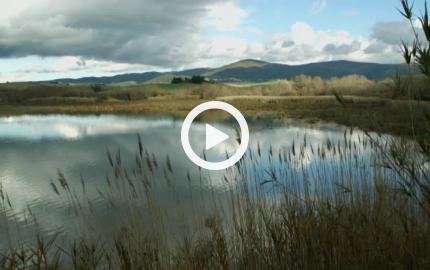
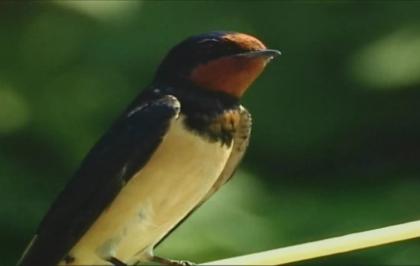
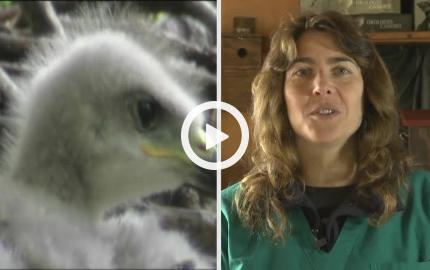
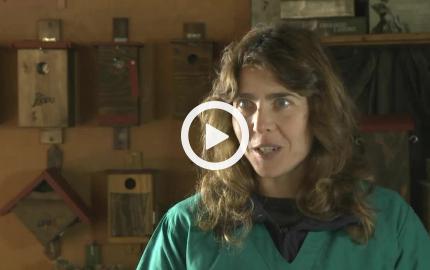

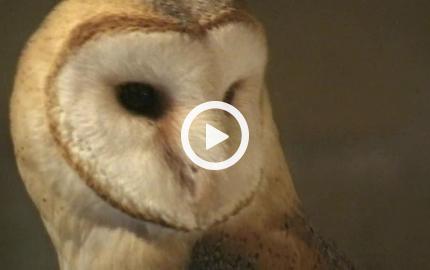
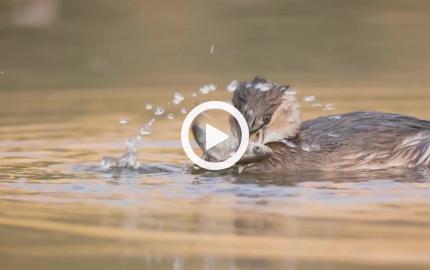
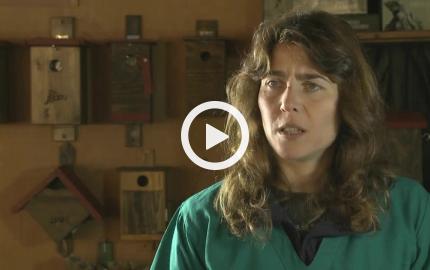
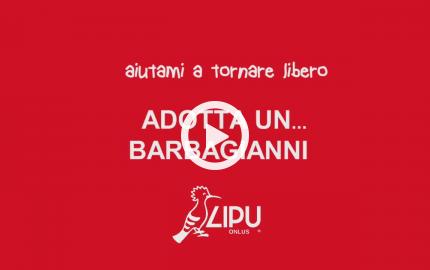
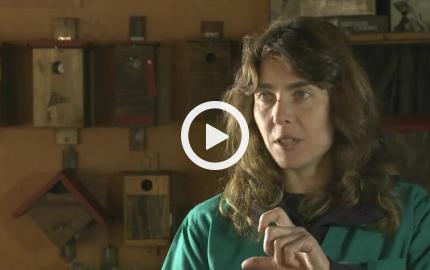
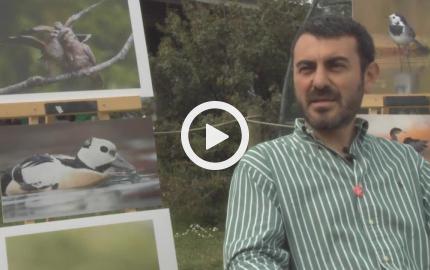

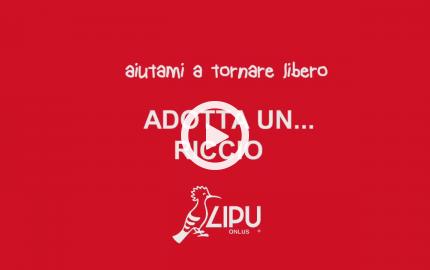


 è un marchio
è un marchio